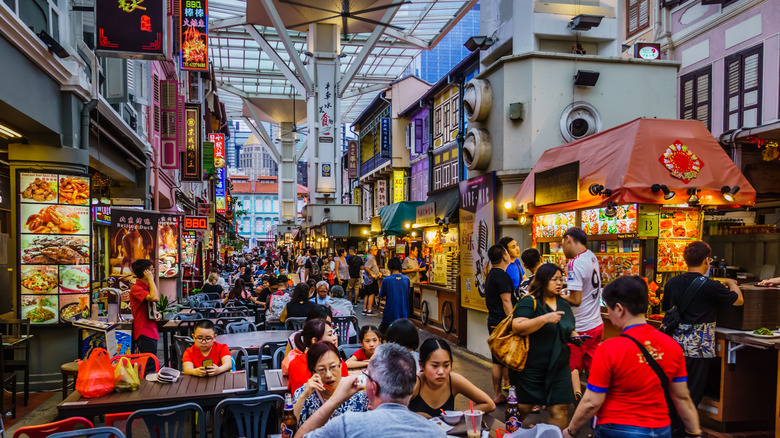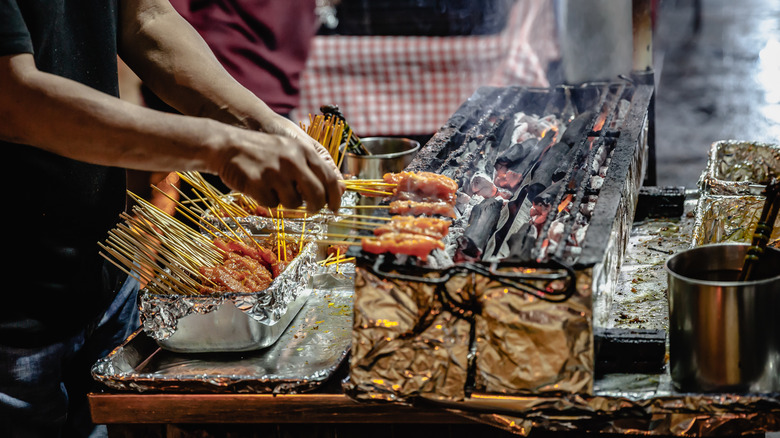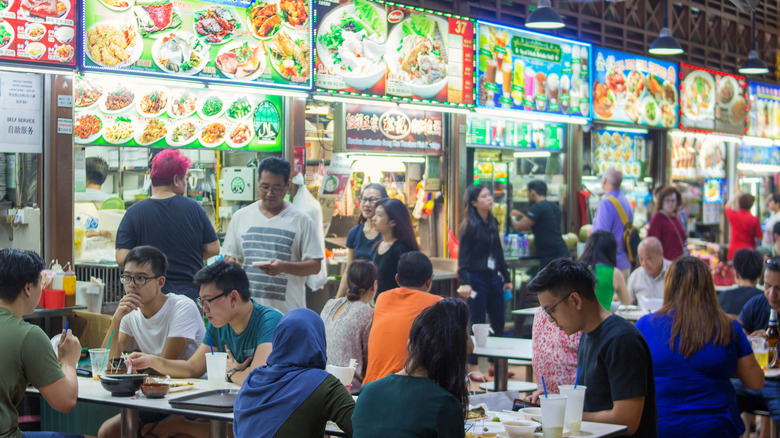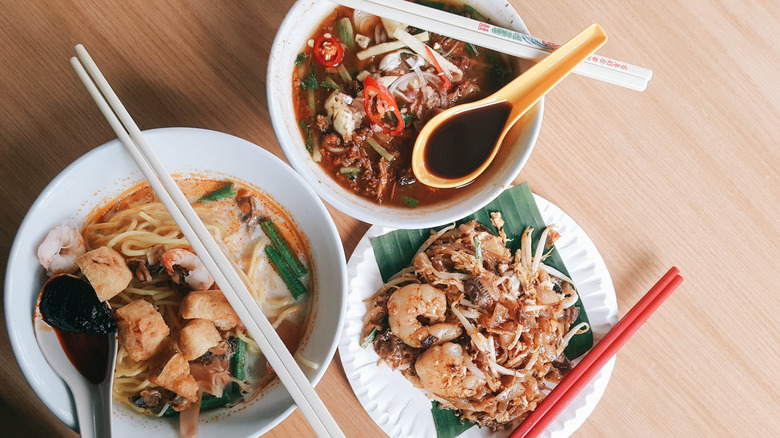What Makes Singapore's Hawker Centers The Buzziest Food Experience
If you find yourself in Singapore seeking the buzziest food experience, the city-state's hawker centers should top your list. Serving as the lifeblood of Singapore's multicultural food heritage, these centers aren't hard to find, with more than 110 to choose from in a country of just 280 square miles.
Singapore's hawker centers are mostly inside open-air buildings, reflecting a shift from their historic under-the-stars roots. They operate as pulsating culinary labyrinths, offering an inclusive dining environment. Here, there are no reservations, no dress code, and you're free to spend as much or as little as you wish.
One promise we can make to hungry visitors is that they'll be overwhelmed by the astounding number of culinary options available. Should you opt for the sizzling satay, nasi lamek, laksa, pani puri, or perhaps, dumplings? Many would suggest you join the longest queue or find the stalls with the Michelin Stars. Whether it's Indian, Malaysian, Chinese, fusion, Western, or Singaporean cuisine that catches your eye, there's no wrong choice in a hawker center.
Competing for your attention, vendors will lure you in with the tantalizing aromas wafting from their stalls. Each stand offers an array of irresistible dishes, representing a unique blend of tradition and innovation, waiting for you to explore their treasure trove of flavors and passionate stories.
History of hawker centers
According to Singapore's National Heritage Board, the culture of street vending or "hawking" has been part of the country's cultural fabric since the 1800s, as it was commonly the way immigrants from other Asian nations could earn a livelihood. These individuals sold affordable, heartwarming dishes infused with a Singaporean flair to please the locals.
After the fallout of WWII, even unemployed Singaporeans used hawking as a way to scrape by. But in the years following this, urban development came with concerns over public health and sanitation of these mobile food carts, and they came under government scrutiny. (Meaning gone were the days when vendors could offer freshly squeezed goat milk on the street straight from the source.) In the 1960s, regulation led to the systematic relocation of these hawkers, first into alleys and parking lots, then into specially constructed facilities, now known as hawker centers.
While these spaces were initially created to ensure vendors had access to clean water, they continued to serve their original purpose — offering affordable and satisfying meals for Singapore's burgeoning working class and residential population. They also help preserve culinary traditions and remain a wellspring for innovative local cuisine. Hawker centers are also one of the best places to socialize and share food in Singapore, making them great tourist attractions.
Hawker centers today
In Singapore today, hawker centers continuously evolve to keep pace with societal trends and customer habits. Over half now accept digital payments, although some hawkers still prefer cash due to transaction delays with e-payment systems. Many hawker centers have also embraced online ordering systems and partnered with food delivery apps to meet changing consumer expectations.
Modern comforts like air conditioning are increasingly integrated into newer hawker centers. The Margaret Drive Hawker Centre at Queenstown, for example, houses 38 stalls across two floors in a disability-friendly building. There's also FOMO at Kampong Glam, which is a trendier "hipster" hawker center that caters specifically to foodies, influencers, and content creators.
The push for evolution and modernization underscores a challenge hawker centers face in Singapore. It's reported that the average hawker is 59 years old. The physical demands of hawking coupled with modest earnings deter younger generations. But efforts and government-sponsored initiatives are underway to rejuvenate these vibrant culinary hubs, promote sustainability, and provide healthy food options. Such strategies resonate with younger demographics and can make hawker centers more attractive to future generations. By adapting to societal shifts while preserving their unique charm, hawker centers can remain relevant and cherished in Singapore's food landscape.
Taste all of Asia in a modern hawker center
The food scene at Singapore's hawker centers is dynamic and still evolving. While the centers remain a stronghold for traditional dishes, they are increasingly becoming a playground for culinary innovation. You may find classic Hainanese chicken rice in one stall, and right next to it is a drink kiosk serving sea salt caramel latte.
For those new to hawker centers, you can't go wrong with classic dishes like roti canai, a tangy and succulent chili crab, a bowl of savory Hokkien prawn mee, or the globally-famous stir-fried noodles known as char kway teow. After having your fair share of Southeast Asia and Singaporean-inspired dishes, move on to Chinese dishes like Cantonese roasted pork or duck, clay pot rice dishes, or dumplings like wontons. For those who love curry and spicier dishes, there will be many Indian and Pakistani dishes for you to sample.
As for dessert, don't skip murtabak (or thick and stuffed pancakes) and different cold desserts like bubur cha cha or cendol, which will give you a reprieve from the tropical heat as you hunt down your next bite. Whatever you're craving, you'll probably find it in one of the vibrant and must-visit hawker centers, the multifaceted heart and soul of the Singaporean food scene.



